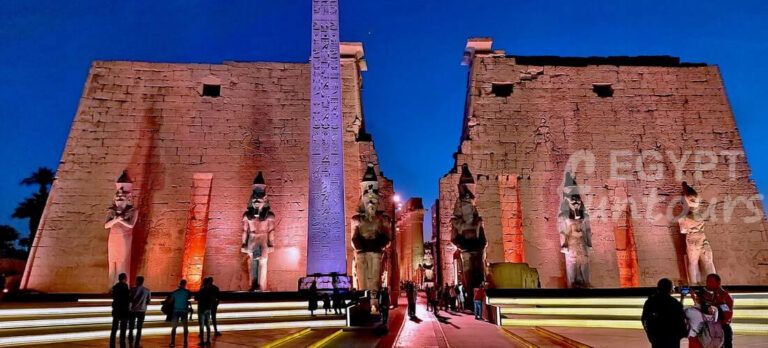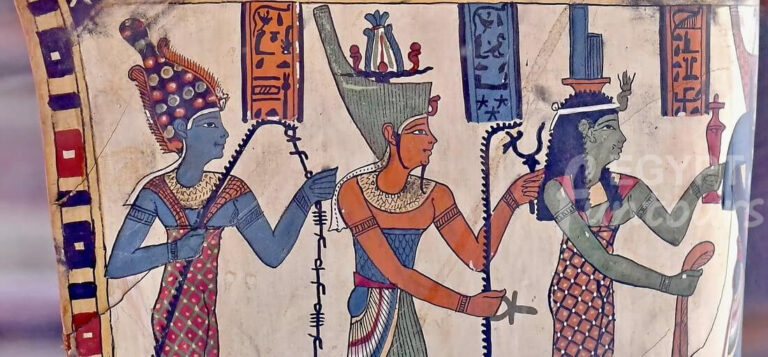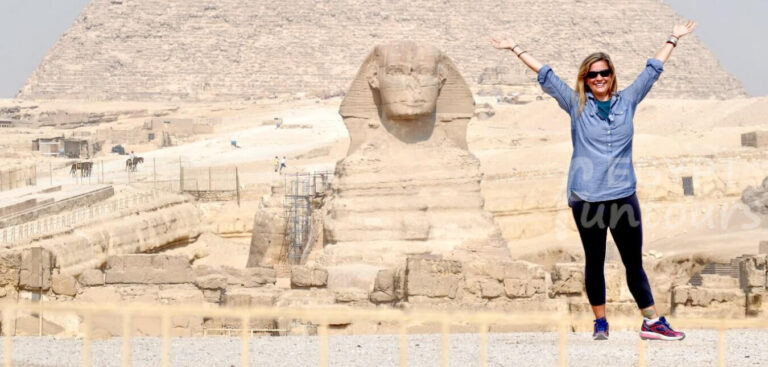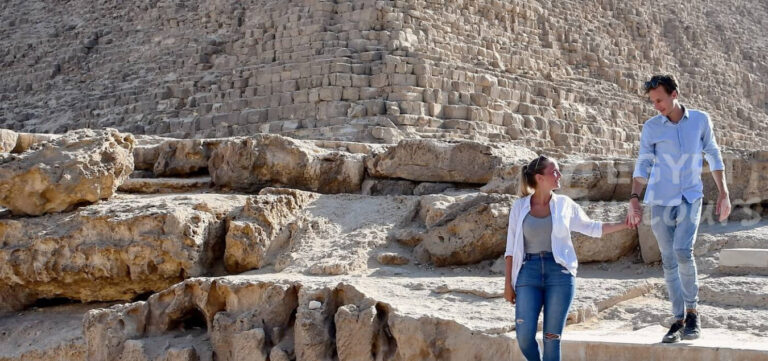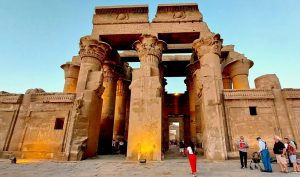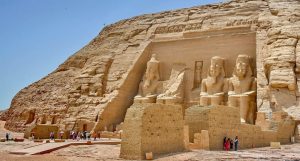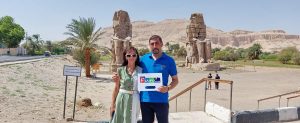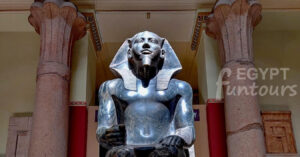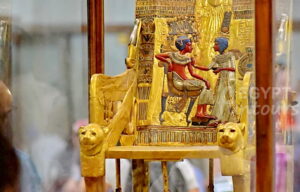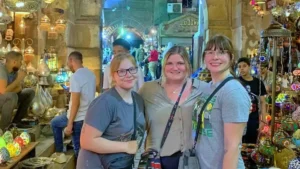The Ten Plagues of Egypt
The Book of Exodus describes the Ten Plagues of Egypt. God inflicted these divine interventions upon Egypt. He sought to persuade Pharaoh to release the Israelites from slavery. This report synthesizes key points from various sources. It provides a detailed understanding of each plague, its possible causes, and its historical and theological significance.
We must understand one crucial point: no Egyptian documents or writings mention the Ten Plagues of Egypt. We have found no evidence on temple walls or ancient tombs. This indicates no archaeological proof supports the existence of the ten plagues of Egypt.
Here is a list of the Ten Plagues of Egypt in the Book of Exodus:
- Water Turning to Blood
- Frogs
- Lice
- Flies
- Pestilence on Livestock
- Boils
- Thunderstorm of Hail and Fire
- Locusts
- Darkness
- Death of the Firstborn
1. Water Turning to Blood

The first plague turned the Nile River to blood. This killed the fish and made the water undrinkable. People often interpret this event as a judgment against Egyptian gods associated with the Nile, such as Apis, Isis, and Khnum.
2. Frogs
The second plague brought frogs from the Nile, and they infested the land. This plague represented a judgment against Heqet, the frog-headed goddess of birth. The red algae bloom theory could link to the proliferation of frogs, as it forced them out of the water.
3. Lice

The third plague involved lice emerging from the ground and infesting both humans and animals. This plague is interpreted as a judgment on Set, the god of the desert. Dead fish and frogs from the previous plagues could have contributed to the infestation of lice.
4. Flies

The fourth plague brought swarms of flies that tormented the Egyptians. This plague is seen as a judgment on Uatchit, the fly god. The flies could have been blowflies emerging from the maggot larvae of dead carcasses.
5. Pestilence on Livestock
The fifth plague caused a mass death of Egyptian livestock due to pestilence. This event is considered a judgment on the goddess Hathor and the god Apis. Historical records suggest that rinderpest, a known cattle disease, could have been the cause.
6. Boils
The sixth plague inflicted painful boils on the Egyptians and their livestock. This plague is interpreted as a judgment against several gods associated with health and disease, including Sekhmet, Sunu, and Isis. The boils could have been caused by a disease transmitted through flies.
7. Thunderstorm of Hail and Fire

The seventh plague brought a thunderstorm of hail and fire that devastated the land. This event represented a judgment against Nut, the sky goddess; Osiris, the crop fertility god; and Set, the storm god. Some scientists believe a volcanic eruption on the island of Santorini could have caused this.
8. Locusts

The eighth plague brought a swarm of locusts that consumed all the crops and vegetation. This plague is interpreted as a judgment on Nut, Osiris, and Set. Locust swarms were a common problem in ancient times and continue to be a threat in modern Africa.
9. Darkness
The ninth plague of the ten plagues of Egypt caused three days of total darkness over Egypt. This event is seen as a judgment against Re, the sun god, who was symbolized by Pharaoh himself. Possible explanations include a major sandstorm, volcanic ash, or a solar eclipse.
10. Death of the Firstborn
The tenth and final plague resulted in the death of every Egyptian firstborn son. This plague is considered a judgment on Isis, the protector of children. This event ultimately led Pharaoh to release the Israelites from slavery.
Historical and Theological Context
The plagues likely occurred during Pharaoh Ramses II’s reign, roughly from 1279 B.C. to 1213 B.C. Researchers propose various theories to explain the plagues, including severe drought, red algae blooms, and volcanic eruptions.
The primary goal of the ten plagues of Egypt, according to rabbinic sources, was to demonstrate God’s unparalleled power and to show that the Egyptian gods were powerless.
The Ten Plagues of Egypt are a significant part of biblical history, symbolizing divine intervention and the struggle for freedom. While various scientific theories attempt to explain these events, their theological and historical impact remains profound.
This post provides a comprehensive overview of the Ten Plagues of Egypt, incorporating key points to offer a balanced and detailed understanding of these ancient events.
Egyptian Reactions to the Ten Plagues of Egypt
Imagine a powerful civilization suddenly facing overwhelming natural disasters, one after another, seemingly beyond their control. While Egyptian records do not directly mention these plagues, such widespread destruction would have caused immense fear, chaos, and suffering among the populace. Each plague would have brought specific hardships, disrupting daily life, agriculture, and the very fabric of society. The cumulative effect would have been devastating, pushing the Egyptians to their limits.
Water Turning to Blood
The Egyptians were unable to drink the water from the Nile due to it turning into blood, causing widespread thirst and desperation. The Nile, considered the source of life in Egypt, was sacred to its vitality and agriculture, making this plague particularly devastating.
Frogs:
Frogs infested Egypt, causing inconvenience and discomfort to the Egyptians. Although frogs were symbols of fertility and not usually seen as a nuisance, their overwhelming numbers turned them into a source of distress.
Lice: The Egyptians were affected by lice infestations, causing distress and discomfort. This plague challenged Geb, the god of the earth, directly at the core of his domain.
Flies
The Egyptians experienced harm to their people and livestock from swarms of flies. This plague signified decay and pestilence instead of regeneration and life, perverting the symbolic protection of the scarab.
Pestilence on Livestock
The Egyptians suffered a terrible plague that resulted in the mass death of their livestock. This event was a direct blow to the deities’ protective and life-giving qualities, undermining their roles and influence.
Boils: Painful boils afflicted the Egyptians and their livestock, causing further suffering. This severe affliction challenged the deities’ ability to protect and heal, rendering their supposed powers ineffective against the divine will imposed by the God of Israel.
Thunderstorm of Hail and Fire
A thunderstorm of hail and fire devastated the land of Egypt, causing destruction and fear. This catastrophic event showcased that neither Nut could shield the sky nor Set could wield his chaos against the targeted devastation delivered by God.
Locusts
A locust swarm devoured what little was left of the crops, leading to food scarcity and economic hardship. This plague demonstrated the powerlessness of Seth and Osiris as locusts consumed the crops of Egypt.
Darkness
The Egyptians endured three days of total darkness, causing disorientation and fear. This profound demonstration of God’s control over the sun overshadowed Ra’s authority and plunged his realm into chaos.
Death of the Firstborn
The death of every Egyptian firstborn son brought about widespread mourning and grief. This powerful declaration of the supremacy of the God of Israel affected every household, from the lowest to Pharaoh’s own, leading Pharaoh to finally release the Israelites from slavery.
The Ten Plagues of Egypt seem to be an important story for all believers; however, if the Ten Plagues of Egypt are a true story, it was very bad for the Egyptians and their gods.


